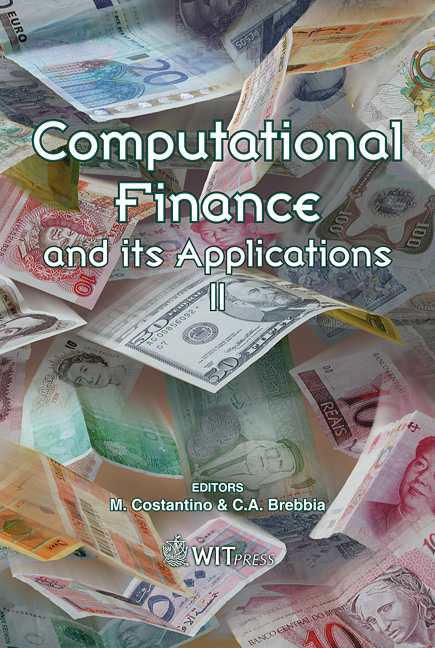Optimal Exercise Of Russian Options In The Binomial Model
Price
Free (open access)
Transaction
Volume
43
Pages
11
Published
2006
Size
424 kb
Paper DOI
10.2495/CF060171
Copyright
WIT Press
Author(s)
R. W. Chen & B. Rosenberg
Abstract
The Russian option is a two-party contract which creates a liability for the option seller to pay the option buyer an amount equal to the maximum price attained by a security over a specific time period, discounted for the option’s age. The Russian option was proposed by Shepp and Shiryaev. Kramkov and Shiryaev first examined the option in the binomial model. We improve upon their results and give a nearoptimal algorithm for price determination. Specifically, we prove that the optimal exercising boundary is monotonic and give an O(N) dynamic programming algorithm to construct the boundary, where N is the option expiration time. The algorithm also computes the option’s value at time zero in time O(N) and the value at all of the O(N3) nodes in the binomial model in time O(N2). Keywords: Russian option, binomial model, dynamic programming. 1 Introduction The Russian Option is a two-party contract which creates a liability for the option seller to pay the option buyer an amount equal to the maximum price attained by a security over a specific time period, discounted for the option’s age. For an N + 1 step time period 0, 1, 2, . . .,N, the option seller’s liability at time step n, 0 ≤ n ≤ N, is, L(n) = βn max 0≤t≤n st
Keywords
Russian option, binomial model, dynamic programming.





